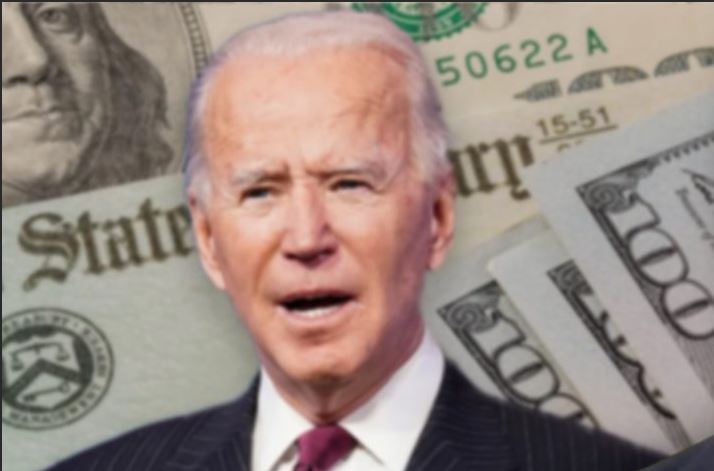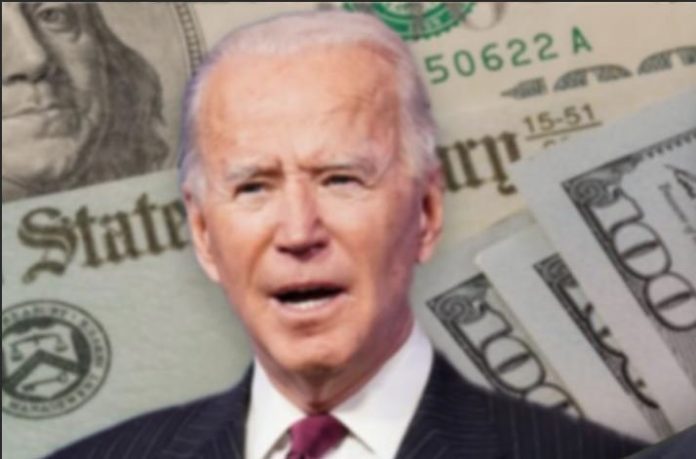Guest post by Ed Butowsky

You’re in your shiny Ferrari, going 150 miles per hour on a smooth highway, when you suddenly realize you’re heading straight toward a cliff at the edge of the Grand Canyon. And now you have to choose:
You can slam on the brakes and pray your car stops in time, or you can put the pedal to the metal and play out the final scene of Thelma & Louise.
It’s one or the other. That’s all there is — unless you’re the United States of America, in which case you have a third option right out of a Roadrunner cartoon:
You move the cliff.
America’s national debt is rapidly approaching $29 trillion, a hole we dig wider and deeper at a pace of roughly $5 trillion a year. We currently owe $7.1 trillion of our debt to foreign countries. Our debt per citizen is nearly $86,000. Our debt per taxpayer is nearly $228,000.
We’re at the edge of the Grand Canyon, dangling by our fingertips, and we’re making the mind-boggling choice to stay there. We’re deep in debt, we’re digging ever deeper every day, and our interest payments are due.
And what do we do? We move the cliff. We print more money, and we use it to pay our interest. Meanwhile, our debt level just keeps increasing.
If the United States were a corporation, it would be insolvent — deep in debt, unable to pay its bills, the greatest bankruptcy in the history of the universe.
That’s a scary thought, for sure. But it’s also a cold fact, and we have to stop ignoring it.
The U.S. maintains an AAA credit rating, the highest rating possible, from the Big Three credit-rating agencies: S&P Global Ratings (formerly Standard & Poors), Fitch Ratings and Moody’s Investors Service.
But it’s hard to see how it merits that rating. An AAA rating reflects an extremely high ability to pay back interest and debt. There are only two companies — Microsoft and Johnson & Johnson — that have AAA ratings. An AA rating, just a notch below AAA, also shows a high ability to pay back interest and debt. Even an A rating is highly coveted.
Generally speaking, investors in companies with any of these ratings don’t fret about the companies’ solvency. They feel the businesses make more than enough money to handle their expenses. But that logic just doesn’t apply to the AAA-rated United States.
In 2011, during the Great Recession, S&P, Moody’s and Fitch placed a negative outlook on Treasury debt. S&P even cut our rating from AAA to AA+. But by 2014 they all returned their outlooks to “stable” as the immediate debt ceiling crisis passed. Since then, Fitch has been the only one of the three to flip its outlook back to “negative” during the COVID pandemic. It cited a deterioration in U.S. public finances as well as the lack of a firm plan to address the growing debt.
Where’s the logic in our top-of-the-world rating? Would you invest in a company that loses money every year and can’t sell enough of its product to pay back its debt? Would you invest in a company that spends about $7 trillion a year and brings in $3.1 trillion in tax revenue? Would you do it knowing that the company is poised to increase spending?
The United States is a huge money loser that can’t pay off its debt or even the interest on its debt. The only way it stays out of default is by printing money, which is a one-way ticket to hyperinflation, and the rating agencies choose to ignore that fact — even as Congress considers sending a proposed $1 trillion infrastructure bill to the president.
How will we pay for that? Easy … We’ll just move the cliff.
No reasonable person can look at how much we owe and how much we’re spending and conclude that we’d be solvent if we didn’t keep printing money we don’t have. But every time we do that, we generate higher inflationary pressures and a weaker dollar.
Even worse, we create a national security risk, because we rely heavily on outside money to keep our financial engine running. If our creditors, most specifically China, wise up and stop loaning us money, we won’t have the money to maintain our military spending — or any federal spending.
Printing money does nothing but generate higher inflationary pressures and a weaker dollar. The average interest rate on the federal debt at the beginning of this year was about 1.7%. That means we can expect to pay over $500 million to service existing debt this year alone.
This is a horrible situation, and there’s no easy way out of it — but it’s long past time we stopped kicking the can down the road. If people would pull their heads out of the sand and honestly assess our country’s financial situation, they’d come to only one conclusion:
We need to stop spending money, and we need to stop printing more money.
The spending part comes first, and it will be painful. It means eliminating or drastically cutting expenses across the board, including many entitlements and benefits and social programs our citizens have come to expect from the government.
The pain that every American will feel will be horrible and life-changing, but it must occur at some point, because the longer we wait, the harder it will be to fix things — if isn’t already too late.
If we keep doing what we’re doing, though — if we don’t stop moving the cliff — the entire world economy could crumble.
Yes, that sounds dramatic. But it’s true. The US is the world’s financial engine. Its currency, the dollar, is the world standard. It’s the biggest domino. If it tumbles, all the others will follow.
#

Ed Butowsky is a financial advisor who founded and is a managing partner in the private wealth management firm Chapwood Investments and created the Chapwood Index. He manages investments for hundreds of clients, including professional athletes and celebrities.
The post How Can US Debt be Rated AAA? appeared first on The Gateway Pundit.


